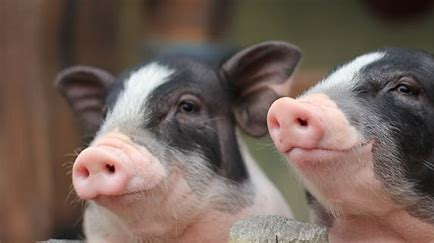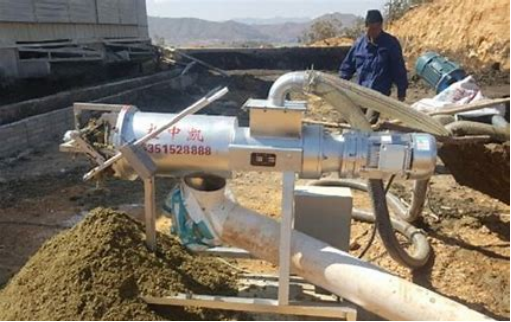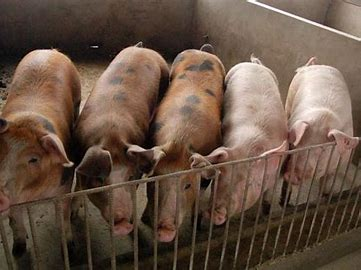
Release Date:2024.09.11
Pigs in a long-term environment with high concentrations of ammonia are prone to respiratory diseases and eye diseases, which will also affect the appetite and growth of pigs, and reduce the productivity and economic benefits of pigs. In the context of increasingly serious air pollution, it is very necessary to understand the emission measures of ammonia in pig houses. At the International Pig Congress, some experts described the control measures of ammonia in pig houses from the site selection and design of pig farms, manure treatment and the introduction of agricultural facilities and equipment technology.

Piggery site selection and piggery design
The location of pig farm has a great impact on the environment, it should be located in the downwind or crosswind direction of the dominant wind direction, the direction of pig house should be south to the sun, the spacing of pig house is reasonable, to avoid the mutual diffusion of harmful gases to form secondary pollution, the ground and sewage ditch in the house should be designed with appropriate slope to facilitate sewage discharge.
Ground structure design
Pighouse ground types include solid ground, leaky ground, and biological fermentation beds. The most common is leakage floor, and the proportion of leakage floor to the total area affects the flow rate of feces and urine, as well as the volatilization of ammonia gas. G. Sun et al found that changing the area of leakage floor in pig house can affect the release of ammonia gas, and 25% of leakage floor area in pig house can reduce the release of ammonia gas by 10% compared with 50% of leakage floor area. In the design and construction of pig houses, the type and function of the ground should be fully considered in order to better prevent and control ammonia emissions and promote the sustainable development of the pig industry.
Feces and urine treatment
Fecal urine separation
The decomposition rate of manure organic matter to produce ammonia gas is slower than that of pig urea. The nitrogen in pig urine almost exists in the form of urea and most of the urea in pig body is excreted with urine. The study showed that the ammonia gas in the blister manure piggery mainly came from the blister manure pit, and the separation of feces and urine could reduce the ammonia gas emission by 99%.
Method of feces removal
Placing the excrement and urine of pigs in the pig house for a long time will lead to an increase in the concentration of ammonia gas in the house. There are two common ways of cleaning manure in large pig farms: blistering manure process and scraping manure process. Although it is easy to operate, the long-term storage of feces and urine has a great impact on the environment in the house. The feces scraping process is to remove feces and urine regularly through machinery, which requires personnel management and maintenance. Selecting appropriate manure removal process and manure removal frequency can effectively reduce ammonia emissions in pig houses.

Through the method of agricultural facilities and equipment
Schoener spray
Ammonia can be reduced during pig farming by spraying in the house, which usually includes microbial deodorant or acid spray. After spraying the pig house with biological deodorant, the ammonia concentration was reduced by 15%, mainly because the acidic environment formed by the beneficial bacteria in the biological deodorant was not conducive to the survival of spoilage microorganisms and thus inhibited their growth and reproduction.
Mechanical ventilation
At the present stage, the mechanical ventilation used in most pig houses to reduce the concentration of ammonia in our country mostly adopts the way of negative pressure ventilation. According to the size of the barn and the amount of breeding, the number of fans with appropriate power is selected to force the malodor gas out of the house, so that the house forms an instantaneous negative pressure state, and the fresh air outside the house automatically enters the house through the air inlet driven by the pressure difference.
Air filter
Air filter is widely used in mechanical ventilation houses. The combination of filter and ventilation system can effectively deal with the toxic and harmful gases produced by pig houses. The toxic and harmful gases react with the filling in the filter cavity to achieve the purpose of purifying the gas.At present, air filters have broad application prospects in the treatment of harmful gases in livestock and poultry.

Conclusion
The effective control of ammonia gas is not only beneficial to the growth of pigs, but also crucial for the sustainable development of the environment. The sustainable development of efficient utilization and energy saving and emission reduction is the theme of the current era. The effective control of ammonia gas is not only beneficial to the growth of pigs, but also crucial to the sustainable development of the environment. Therefore, it is necessary to understand the effective measures of ammonia gas emission reduction in pig production.
If you would like to learn more about the pig industry, please visit the Leman China Swine Conference website for more information.
Source:SWINE INDUSTRY SCIENCE
If there is any infringement, please contact to delete